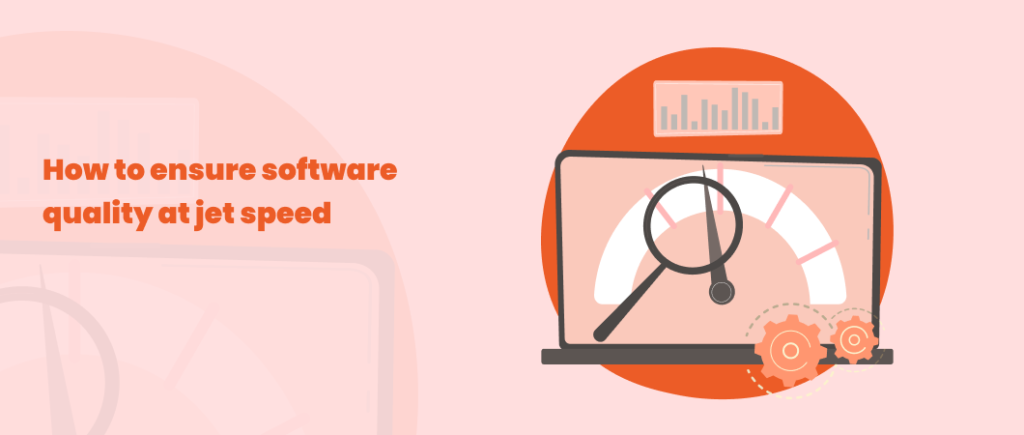Last updated on June 10th, 2024
The recently released 2022–23 World Quality Report by Sogeti offers a valuable assessment of the prevailing state of quality engineering practices in the software industry. In the face of the ever-accelerating pace of application development, the report sheds light on the challenges confronting quality assurance (QA) teams. It underscores the evolving role of modern QA practices in this era of rapid development.
So, what do the experts in the quality domain have to say about these challenges and the potential solutions?
At Forgeahead, our Head of Quality Assurance and Testing, Shaju Balakrishnan, has addressed this challenge. He emphasizes the imperative transformation of QA into a quality engineering role. He says, “QA will have to transform into a quality engineering role and embed systems that allow quality checks at every stage of the process of software creation.” In essence, Shaju emphasizes that making high-quality software depends on smoothly including QA testing in every step of designing and developing the application, right from the start.
In a 2020 survey of application developers, it was found that 21% of respondents claimed to be building applications faster than their competitors. An additional 21% and 19% expressed confidence in their ability to deliver mobile and web applications in a matter of mere months.
However, in the face of this accelerated development, how can product companies ensure the quality of their applications? Let’s delve into five strategies to expedite software testing.
Strategies to Accelerate Software Quality Testing
Accelerating software quality testing is essential for delivering robust and reliable applications within tight deadlines. Implementing effective strategies can significantly reduce testing time while maintaining high standards of quality and performance.
- Automated Testing: Utilize automated testing tools to execute repetitive tests quickly and accurately, freeing up manual testers to focus on complex scenarios.
- Continuous Integration and Continuous Deployment (CI/CD): Implement CI/CD pipelines to ensure that code changes are automatically tested and deployed, allowing for faster feedback and integration.
- Parallel Testing: Run multiple tests simultaneously across different environments and platforms to reduce overall testing time.
- Shift-Left Testing: Integrate testing early in the development process to identify and resolve issues sooner, minimizing last-minute defects and delays.
- Risk-Based Testing: Prioritize testing efforts on the most critical and high-risk areas of the application to ensure key functionalities are thoroughly vetted.
- Performance Testing Early: Conduct performance testing early in the development cycle to identify potential bottlenecks and scalability issues before they become critical problems.
- Leveraging AI and Machine Learning: Use AI and machine learning tools to predict potential defects, optimize test cases, and improve test coverage.
Conclusion
To address the need for accelerated software testing, product companies may consider the recruitment and training of additional QA engineers and testers. Nevertheless, achieving a harmonious balance between QA and QE is imperative for this strategy to succeed.
At Forgeahead, with our extensive focus on QA and quality engineering, we can help you identify inefficiencies, roadblocks, and gaps that may impede the pace of your product releases. Our QA team boasts over 22 years of industry experience and can maximize your test coverage. We can provide a free estimate for your upcoming project in under 24 hours. Consult with our expert consultants now to elevate your software quality and assure success in the digital realm.
Forge ahead with quality engineering. Contact us today to accelerate your software testing and ensure the success of your digital initiatives.
FAQ
What are the main attributes of software quality?
The main attributes include functionality, reliability, usability, efficiency, maintainability, and portability.
What is the difference between functional and non-functional requirements?
Functional requirements specify what the software should do, like specific features and functions. Non-functional requirements describe how the software performs a task, including performance, security, and usability.
What is the role of testing in software quality?
Testing identifies defects and ensures that the software functions as expected. It is a critical activity to verify and validate the software against its requirements.
What is the difference between verification and validation?
Verification ensures the software is built correctly according to specifications. Validation ensures the software meets the user’s needs and expectations.
How does continuous integration (CI) contribute to software quality?
CI automates the process of integrating code changes, allowing for frequent builds and testing. This helps detect and address issues quickly, improving overall software quality.
What are the best practices for ensuring high software quality?
Best practices include adopting a quality-focused development process, performing regular code reviews, maintaining comprehensive testing, using automation tools, following coding standards, and involving stakeholders throughout the development process.



